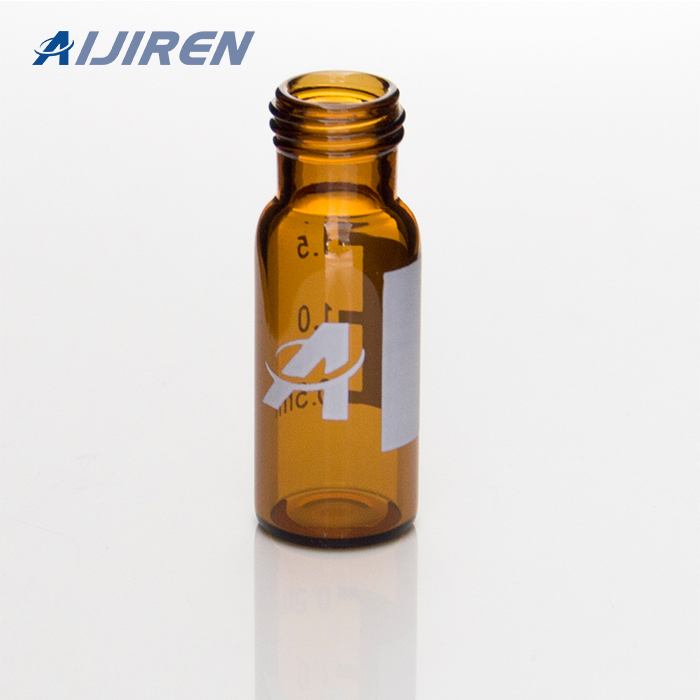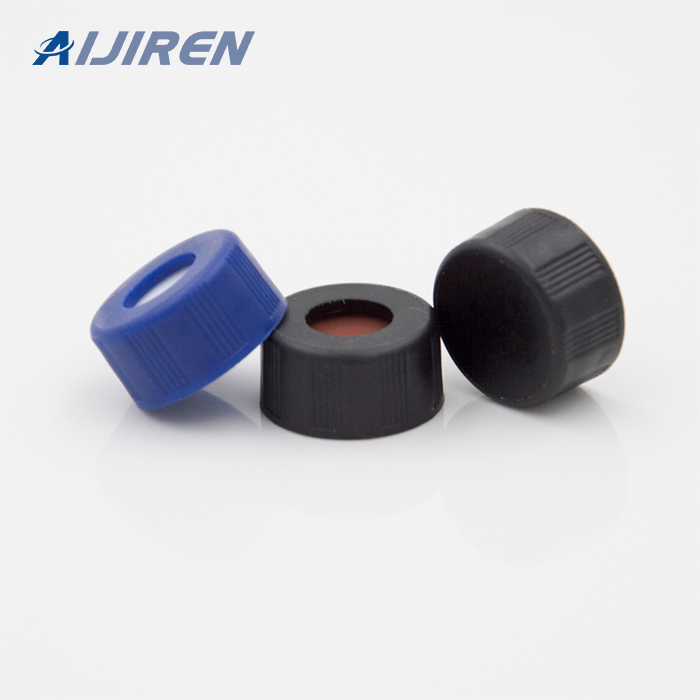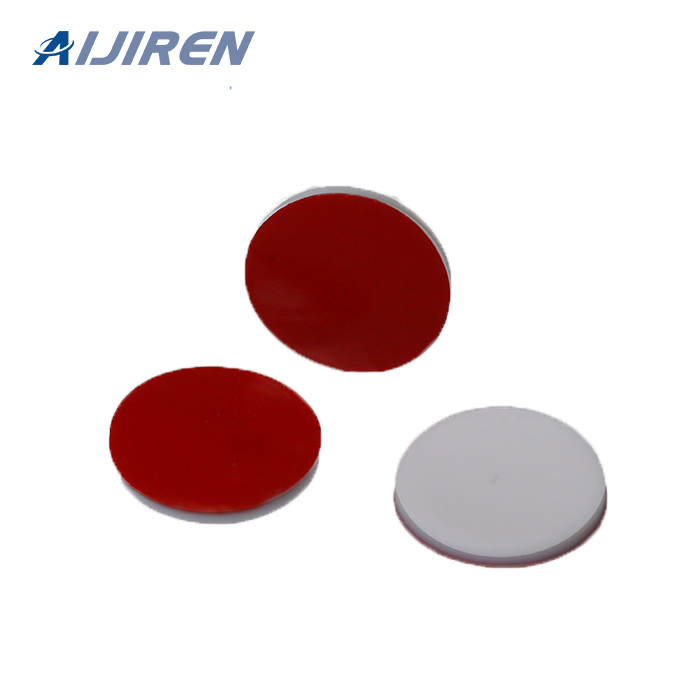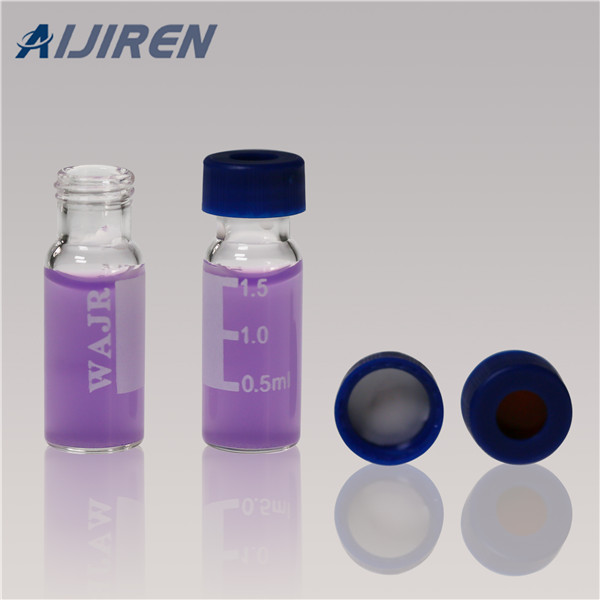



Jul 22, 2020 · MS-triggered fractionation is conducted based on the XIC (extracted ion chromatogram) of ion species originating from the target compound. The XIC is drawn automatically by setting the molecular weight of the target compound. Fig. 3 shows the chromatograms obtained by preparative LC-MS.
Asymmetric-flow field-flow fractionation (AF4), implemented in the Eclipse system, is by far the most commonly used FFF separation technique. The AF4 principle is described below. How AF4 separates by size Electrical/Asymmetric-Flow FFF Key Benefits of FFF Versatile separations with multiple detection options
Aug 1, 2020 · HPLC was performed for identification of anti-fungal compounds in active isolate and six non-active isolates. HPLC has frequently been used for the separation and detection of compounds in complex mixtures (Regalado et al., 2011). Different studies have reported quercetin from Streptomyces.
Aug 7, 2019 · The fractionation of peptide mixtures by two-dimensional LC techniques has been performed using various orthogonal combinations, such as high-pH reversed phase/low-pH reversed-phase liquid chromatography (high-pH RP/low-pH RPLC), strong cation exchange/reversed-phase liquid chromatography (SCX/RPLC), size exclusion chromatography/reversed-phase
Aug 20, 2019 · However, the fractionation of protein samples in the sub-microgram range can be limited owing to sample loss during the fractionation process. Thus, it is essential to develop efficient microscale fractionation strategies. Here, we describe a modified method for high-pH peptide fractionation using C18-StageTips.
A good SEC-HPLC method is a critical part of the analytical toolbox for biotherapeutics Invest in method development at early stages of the program Critically evaluate the quality of the data SEC-HPLC should be used in conjunction with orthogonal techniques Complementary techniques to give a more complete picture of aggregate
This review highlights many of the protein and peptide fractionation and separation methods, such as electrophoresis and high-performance liquid chromatography (HPLC), which have experienced significant development over the past forty years. Modern instrumental strategies for the resolution of cell proteins, based on separations employing a
Jan 28, 2022 · In this work, a simplified approach based on the successive fractionation of ATI extracts by reverse phase and ion exchange chromatography was developed. ATIs were first extracted from wheat
Fractioning tens of mg Conventional HPLC (repeated fractioning operations) Fractioning hundreds of mg Semi-Preparative System Fractioning several grams Large-Scale Preparative System: Fractioning at high purity (Check molecular weight, if possible.) Enhanced purification efficiency using ELSD or LCMS LCMS/ELSD Preparative System
More recently, fractionation of food extracts by high-performance liquid chromatography (HPLC) has been utilized, but to date, this approach has found limited applicability. An elegant way to optimize the separating power of modern GC capillary columns is fractionation of flavor extracts on two different columns – so-called multidimensional
Sep 5, 2022 · 3.2: High Performance Liquid chromatography. High-performance liquid chromatography (HPLC) is a technique in analytical chemistry used to separate the components in a mixture, and to identify and quantify each component. It was initially discovered as an analytical technique in the early twentieth century and was first used to separate colored
Mar 3, 2023 · Because the preparative HPLC method required large quantities of solvent, we explored the use of supercritical fluid chromatography as an alternative separation mode which, to the best of our knowledge, is the first time this technique is used to separate diarylethene-based photoswitchable compounds.
Mar 6, 2021 · HPLC; Fractionation of samples, as the name suggests, is a process of separating out the components or fractions of the lysate. Fractionation typically begins with centrifugation of the lysate. Using low-speed centrifugation, one can remove cell debris, leaving a supernatant containing the contents of the cell.
Protein Fractionation Techniques - Aijiren Technologies
Aug 22, 2021 · HPLC; Fractionation of samples, as the name suggests, is a process of separating out the components or fractions of the lysate. Fractionation typically begins with centrifugation of the lysate. Using low-speed centrifugation, one can remove cell debris, leaving a supernatant containing the contents of the cell.
Aug 20, 2019 · However, the fractionation of protein samples in the sub-microgram range can be limited owing to sample loss during the fractionation process. Thus, it is essential to develop efficient microscale fractionation strategies. Here, we describe a modified method for high-pH peptide fractionation using C18-StageTips.
This unit describes the fractionation and analysis of anionic oligosaccharides and gangliosides using anion-exchange high-performance liquid chromatography (HPLC). Saccharides or gangliosides are eluted in order of the number of negative charges they possess, although the charge-to-mass ratio can also contribute to elution position.
Jan 28, 2022 · In this work, a simplified approach based on the successive fractionation of ATI extracts by reverse phase and ion exchange chromatography was developed. ATIs were first extracted from wheat
This review highlights many of the protein and peptide fractionation and separation methods, such as electrophoresis and high-performance liquid chromatography (HPLC), which have experienced significant development over the past forty years. Modern instrumental strategies for the resolution of cell proteins, based on separations employing a
Sep 5, 2022 · 3.2: High Performance Liquid chromatography. High-performance liquid chromatography (HPLC) is a technique in analytical chemistry used to separate the components in a mixture, and to identify and quantify each component. It was initially discovered as an analytical technique in the early twentieth century and was first used to separate colored
Aug 7, 2019 · The fractionation of peptide mixtures by two-dimensional LC techniques has been performed using various orthogonal combinations, such as high-pH reversed phase/low-pH reversed-phase liquid chromatography (high-pH RP/low-pH RPLC), strong cation exchange/reversed-phase liquid chromatography (SCX/RPLC), size exclusion chromatography/reversed-phase
Aug 22, 2021 · HPLC; Fractionation of samples, as the name suggests, is a process of separating out the components or fractions of the lysate. Fractionation typically begins with centrifugation of the lysate. Using low-speed centrifugation, one can remove cell debris, leaving a supernatant containing the contents of the cell.
A good SEC-HPLC method is a critical part of the analytical toolbox for biotherapeutics Invest in method development at early stages of the program Critically evaluate the quality of the data SEC-HPLC should be used in conjunction with orthogonal techniques Complementary techniques to give a more complete picture of aggregate
Hemoglobin Fractionation by HPLC. Top is purple (lavender). No special patient preparation is required. Obtain specimen by standard collection procedures. Deliver to lab immediately. All specimens must be signed into the laboratory. If unable to deliver to the lab immediately, store and transport specimen at 2-8° C. Specimen must be received
Accelerated fractionation is defined as delivering the same total dose of radiation as in CF in a shorter overall treatment time by giving two or more fractions of radiation daily.1 The rationale for using accelerated fractionation is to overcome repopulation of clonogenic tumor cells during fractionated radiotherapy, which should result in an
An HPLC preparative system must offer different capabilities from a normal analysis system. It is used to fraction high-purity (and in some cases large quantities of) compounds required for subsequent evaluation, analysis, and processes in the shortest possible time.
Protein Fractionation Techniques - Aijiren Technologies
Mar 6, 2021 · HPLC; Fractionation of samples, as the name suggests, is a process of separating out the components or fractions of the lysate. Fractionation typically begins with centrifugation of the lysate. Using low-speed centrifugation, one can remove cell debris, leaving a supernatant containing the contents of the cell.
Aug 1, 2020 · HPLC was performed for identification of anti-fungal compounds in active isolate and six non-active isolates. HPLC has frequently been used for the separation and detection of compounds in complex mixtures (Regalado et al., 2011). Different studies have reported quercetin from Streptomyces.
It should also be remembered that HPLC is not merely an analytical technique, but can be used equally easily for micropreparative purposes. For example, it is easy to collect fractions for analysis by other techniques such as by chemical degradation or by mass spectrometry (MS) [1] or nuclear magnetic resonance spectroscopy [2].